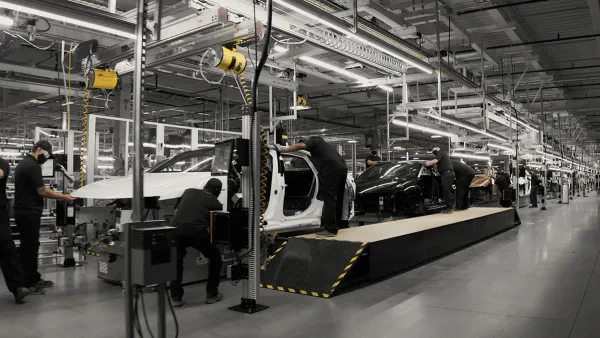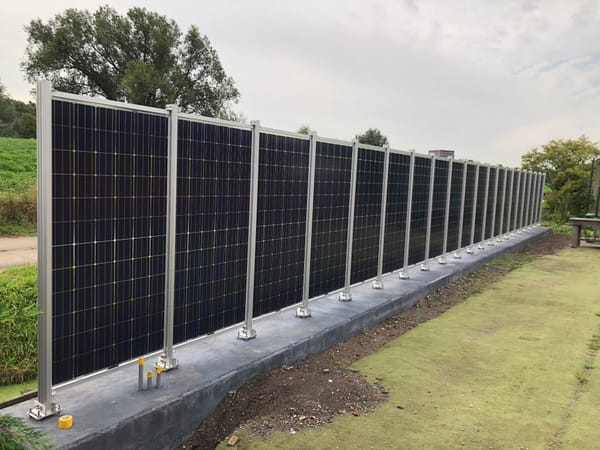How much will it cost to deal with climate change?
Good Afternoon,
Today I attempt to do some “napkin math” for how much it’s going to cost the world for climate change mitigation and adaptation. The inputs for the costs are incredibly complex. But for the sake of thinking about the true size of the problem, I’m taking a stab at it.
-Mike

How do we think about the cost of dealing with climate change? It is so complicated that it seems difficult to wrap our brains around what exactly we need to do. And what counts a cost versus an investment?
Making matters more difficult, while we can think about what it would take to get to net zero in one country, that doesn’t solve the problem of climate change. For instance, everyone needs to remove decades of carbon that’s been put in the world’s atmosphere, and any improvements made in any one country or region will have to be matched everywhere else, since the value of getting one place to net zero is diminished if the rest of the world hasn’t gone green as well.
In addition, some spending in the developed world, like greening the electrical grid, can be thought of as an investment that will bring a relatively quick profitable return. But for the developing world, greening the grid in many cases means first creating an infrastructure for economies that are far from humming. There may be an eventual return on investment, but it will come much slower in the developing world since their economies are not entirely ready to take advantage of new infrastructures. For instance, Kenya might be doing a great job of building out solar panels, but with a GDP that’s one third of Indiana, it’s going to take a while to provide a return.
So those are the hurdles. There’s lots of big squishy numbers that are incredibly hard to quantify. What are the categories of spending we need to consider? Some ways we’ll need to spend money include:
- Subsidies for green energy transition in the developed world – This is basically tax credits (in the West) or cheap government loans (in China) provided to companies so they can develop and scale up new technologies. Ultimately, these governments expect the technologies to catch on enough that they’ll be able to stop the subsidies at some point. (Also, China is still considered a “developing country” in the United Nations, but that’s a whole other diplomatic kettle of fish.)
- Subsidies for developing world green energy transition – This would come in two ways, as foreign direct investment, from places like the Norway Sovereign Wealth Fund, that would generate profits. The second would be loans and grants from multilateral development banks (MDS) like the World Bank or the African Development Bank that would pay governments to build out infrastructure like EV charging stations and high capacity electrical transmission lines.
- Developing world climate adaptation – While “mitigation” focuses on stopping climate change, “adaptation” focuses on physical changes to deal with sea level rise, drought, flooding, and excessive heat.
- Loss and damage payments – Agreed upon in concept at COP27 last year, the idea is that developing countries that are slowly being eroded away or suffering extensive natural disasters resulting from climate change would receive payments to assist with rebuilding, similar to what the Federal Emergency Management Agency does in the United States. But, the size of the fund, who gets paid under what circumstances, and how much each developed country would pay in still needs to be determined, although one proposal is for a $100 billion annual fund.
- Developing World Debt Forgiveness – A proposal from Barbados, The Bridgetown Initiative, which has gained significant support over the last year, would forgive and restructure debt to developing countries to avoid the “climate debt trap”. The concept is that developing countries are typically more exposed to climate disasters than most, and with each disaster they are forced to incur more debt to fix the problems, but before the debt can be repaid, new climate disasters force them to incur yet more debt…and so on.
- Carbon Emission Removal – A month ago I talked about the idea of carbon removal as an externality, free market economies will not willingly pay for carbon removal unless governments mandate it, either as a tax or a regulatory requirement. Earlier this month European Commission President Ursula von der Lyden floated the idea of using those taxes to invest in developing world green transitions.
Those are generally pretty big buckets – each with a lot of holes in them. The costs of one inevitably leak into another. They are hard to segregate, and since we’re talking about macro economic spending on the order of trillions of USD, there’s a great deal of influence the various buckets will have on each other. For instance, if you increase the subsidies for developing world green transition, you might see faster economic growth, lessening the need for developing world forgiveness.
So how much will all of this cost? Let’s do some “napkin math”, with the understanding that I am far from a macro economist and don’t specialize in this area, although there are plenty of reports available that make estimates on the individual components. I’m linking to what I can find on the interwebs.
Let’s start with the cost of green energy transition. A McKinsey Institute study estimated $3.5 trillion more a year needs to be spent on the physical plant of green energy, the “equivalent to half of global corporate profits and one-quarter of total tax revenue in 2020,” reports the study. Another study by Bloomberg NEF finds spending needs to increase by $6.9 trillion a year. Critically, neither study breaks out the cost of developing vs. developed world infrastructure, and while I was unable to access the details of the Bloomberg study, the McKinsey study assumes a one-for-one exchange for fossil energy to green energy. In other words, for every one fossil fuel-powered job or energy unit created, it will be replaced with one green job or energy unit. That is likely an underassessment, especially for the developing world, but I suppose conservative estimates are always better.
To come up with a number, let’s be like Solomon and split the baby and go with $5.2 trillion.
But to make this work, not all of the financing can come from governments. The private sector has to play a major role. One of the more interesting ideas from the Bridgetown Initiative (you’re going to hear a lot about that here) suggests the developing world gets investment through a $5 trillion “Climate Mitigation Trust” created by developed countries that invite private investment in the trust. This would essentially be an investment fund that anyone from private pension funds to sovereign wealth funds could put money into. They also call for $1 trillion new investment from multilateral development banks, like the World Bank, that are essentially financed by developing countries as foreign aid.
Global Green Energy Transition Cost: $1,000 billion from governments and $4,200 billion private investment per year
Climate adaptation is also very tricky: How many sea walls do you have to build, versus ignore? Helpfully, the UN Environment Program estimated developing country adaptation costs will range between $180 to $300 billion a year through 2030, and then go up to as much as $500 billion by 2050, as the climate inevitably worsens. So, for the napkin’s sake, let’s stick with the big early number and extend that through 2050.
Developing World Climate Adaptation: $300 billion per year
Right now the number passed around for the loss and damage fund is $100 billion a year, as advanced by the Bridgetown Initiative, “especially for countries located between the Tropics of Cancer and Capricorn due to their extra need for climate-related disaster recoveries”.
Loss and Damage Fund: $100 billion per year
When it comes to debt forgiveness, it’s tough to determine the exact cost. As of 2020, multilateral development banks (MDB) had just over $1.9 trillion in assets. Similarly, although China does not disclose its lending activity, it’s estimated that the Belt and Road program has made about $1 trillion in loans. Developing countries complain that interest rates for their lending is typically in the double digits – between 10 and 20 percent (although Chinese interest rates are a close-held secret). Developing countries argue their debt should be restructured to be closer to Western, single digit rates. But, because so many loans by MDBs end up in default, the expectation is that without higher interest rates to cover that loss, some higher amount will end up getting written off the books. How much? Who knows. Let’s guess 20% of all assets, $600 billion a year.
Debt Restructuring and Forgiveness Cost: $600 billion per year
Finally, there’s the cost of carbon emissions removal. The cost of removing carbon emissions is high right now, about $350 per ton. But with scale, optimistic projections put cost at about $50 per ton. Also, to mitigate current emissions, we’d need to remove just under 10 billion tons a year. But we need to do better than net zero, since there’s lots of carbon we need to make up for if we’re going to halt climate change – and also scientists estimate climate change is actually the world ecosystem responding to carbon inputs from 10-20 years ago. So, let’s say we want to pull out 15 billion tons per year. $50 x 15 billion = $750 billion a year.
For perspective, we’re spending about $700 billion a year on oil right now, so that means our energy costs will have to double for a while as we clean up the carbon.
Carbon Emission Removal Cost: $700 billion per year
Total Annual Green Transition Cost: $6.9 trillion per year
That’s a big number. For perspective, the global GDP in 2022 was $100.56 trillion. The U.S. was $25.46 trillion. Can we get there? I think so. But it’s going to take a great deal of change in how we think about our national economies.
Welcome to the end of the newsletter! The five U.S. late night hosts put together a podcast during the writer and actor strikes. It’s pretty darn funny.
Thank you for reading Heat Rising. This post is public so feel free to share it.





